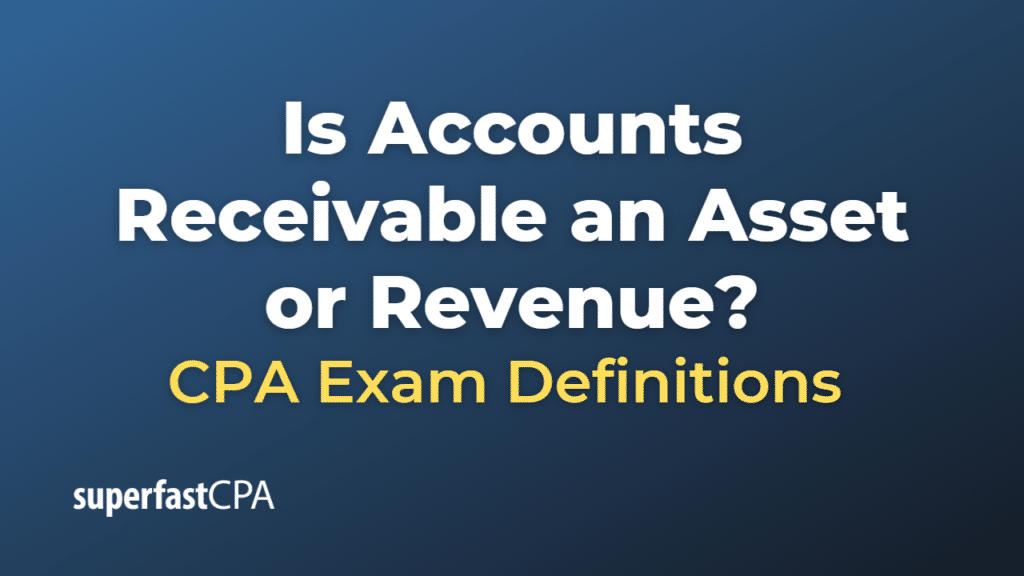Is Accounts Receivable an Asset or Revenue
Accounts Receivable (AR) is considered an asset, not revenue.
When a company sells goods or services to a customer on credit, it records the amount the customer owes as “Accounts Receivable” on its balance sheet. This is because the company has a right to receive this money in the future. Thus, it’s an asset, specifically a current asset, as it’s expected to be received within one year.
When the company initially makes the sale, it also records the amount as revenue on its income statement, even though it hasn’t yet received the cash. This is in line with the accrual basis of accounting, which records revenues and expenses when they are earned or incurred, regardless of when cash is exchanged.
Later, when the company actually receives the cash from the customer, it reduces (credits) the Accounts Receivable amount on its balance sheet but does not record it as additional revenue on the income statement, because the revenue was already recognized at the time of the sale.
So, while Accounts Receivable is directly tied to revenue (since it originates from a sale), it is not itself revenue, but an asset representing the money owed to the company from that sale.
Example of: Is Accounts Receivable an Asset or Revenue
Let’s consider an example to illustrate how accounts receivable works.
Suppose a company, say, XYZ Corp., sells $5,000 worth of goods to a customer on credit. Here’s how the transaction will be recorded:
At the time of the sale:
- The company would record the sale as revenue on its income statement, even though it hasn’t received cash yet:
Revenue account (Income Statement) – Increase (Debit) $5,000 - The company would also record an increase in accounts receivable (a current asset) on its balance sheet:
Accounts Receivable account (Balance Sheet) – Increase (Debit) $5,000
Later, when the company receives cash from the customer:
- The company decreases (credits) the accounts receivable amount on its balance sheet:
Accounts Receivable account (Balance Sheet) – Decrease (Credit) $5,000 - At the same time, it increases (debits) its cash account:
Cash account (Balance Sheet) – Increase (Debit) $5,000
Notice that when the company collects on its accounts receivable, it does not record additional revenue. This is because the revenue was already recognized at the time of the sale. The collection just changes the form of the asset from accounts receivable (an amount owed) to cash.














